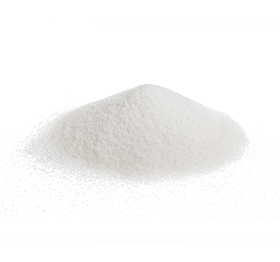Salt (नमक)
Namak

About Salt
Salt/ नमक
Salt has been around for thousands of year, and it is one of the five basic tastes. it was once so valuable that people traded it gold. Studies suggest that our body might just need 186 milligram of salt every day. (i.e. tenth portion of a teaspoon). In general people are eating 18 times more salt than the body required.
Salt is being used as
- A Food Preservative
- A Texture Enhancer
- A Flavour Enhancer
- A Nutrient Source
- A Binder
- A Color Enhancer
There are different types of Salt available, but non is healthier than another.
Sea Salt
Kosher Salt
Iodized Salt
Coarse Salt
Flaky Salt
Pink Himalayan Salt
Salt is a vital mineral essential for human health. It plays a crucial role in maintaining fluid balance, supporting nerve function, and aiding muscle contraction. While it enhances flavor and preservation in food, it's important to consume it in moderation to prevent health issues such as hypertension. Balancing salt intake with overall dietary needs is key for optimal health.
How to Store Salt
To store salt effectively, begin by placing it in an airtight container to prevent moisture absorption. Choose a cool, dry location away from direct sunlight, as heat and light can degrade its quality. If using coarse salt, consider a glass jar with a tight lid for easy access and to maintain its texture. For fine salt, a shaker with a secure top can be convenient for daily use. Regularly check for any signs of clumping or moisture. If salt does clump, it can still be used; just break it apart before using. Proper storage ensures longevity and preserves flavor.
Shelf Life of Salt
Salt has an indefinite shelf life when stored properly. It remains safe to consume indefinitely, though its texture or flavor may change over time if exposed to moisture or contaminants.
How to Check Salt Before Buying
When checking salt before purchasing, first inspect its color and texture. High-quality salt should be white or light in color, without any clumping or impurities. Feel the granules; they should be dry and free-flowing. If buying packaged salt, ensure the packaging is intact and check the expiry date. For specialty salts like sea salt or rock salt, verify the source and quality claims on the label.
While it may be tempting to buy in bulk for cost savings, consider your storage conditions. Salt has a long shelf life, but it must be kept in a cool, dry place to prevent moisture absorption and clumping. If you use salt regularly and have the proper storage, buying in bulk can be economical. However, avoid purchasing large quantities if you don’t use it frequently to ensure freshness and prevent waste.
Explore
Explore our services and take your business to the next level.
Recent Posts

Bajra Paratha is a perfect addition to your weekly meal plan, offering both flav...

Bajra Vegetable Soup is the perfect addition to a balanced weekly menu. Packed w...

Lauki and Methi Thepla is the perfect addition to your balanced weekly menu. Pac...

Methi Muthia is a nutritious, tasty addition to your weekly menu, packed with th...

Kanda Bhaji is a delicious and crispy onion fritter, perfect for adding variety...
Ready for a Healthier You?
Take control of your wellness! Get a customized meal plan that fits your lifestyle. It's time to eat smarter, feel better, and transform your life!
Get Your Plan Now!Already a member? Login and start now!
Nutrition Facts
Serving Size:
Servings Per Container: 1
| Amount Per Serving | ||
|---|---|---|
| Calories | 0 | |
| Fat | ||
| Saturated Fat | ||
| Trans Fat | ||
| Cholesterol | 0 | |
| Sodium | 39000 | |
| Carbs | 0 | |
| Fiber | ||
| Sugar | 0 | |
| Protein | 0 | |
| VitaminD | ||
| Calcium | 0 | |
| Iron | 0 | |
| Potassium | 0 | |
* Percent Daily Values are based on a 2000 calorie diet.
* Percent Daily Values are based on a 2000 calorie diet.




